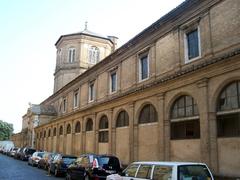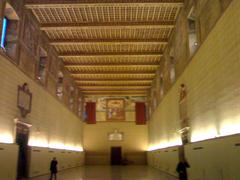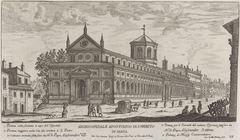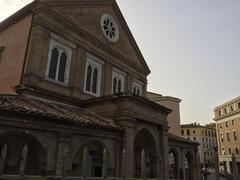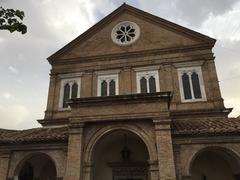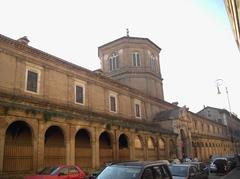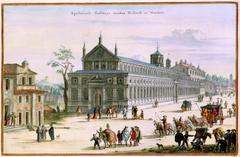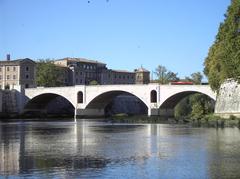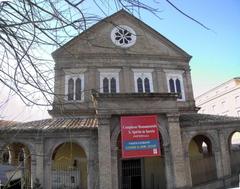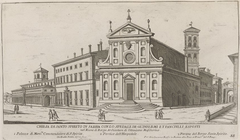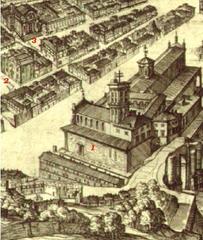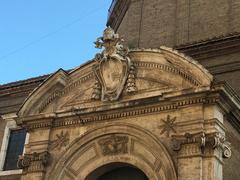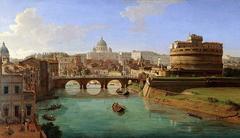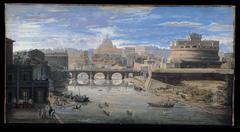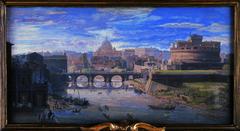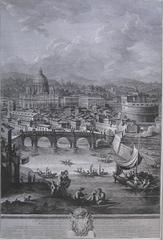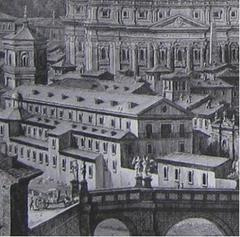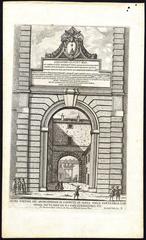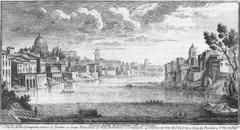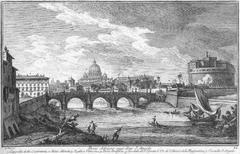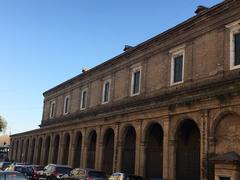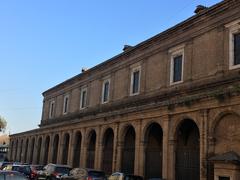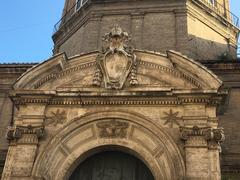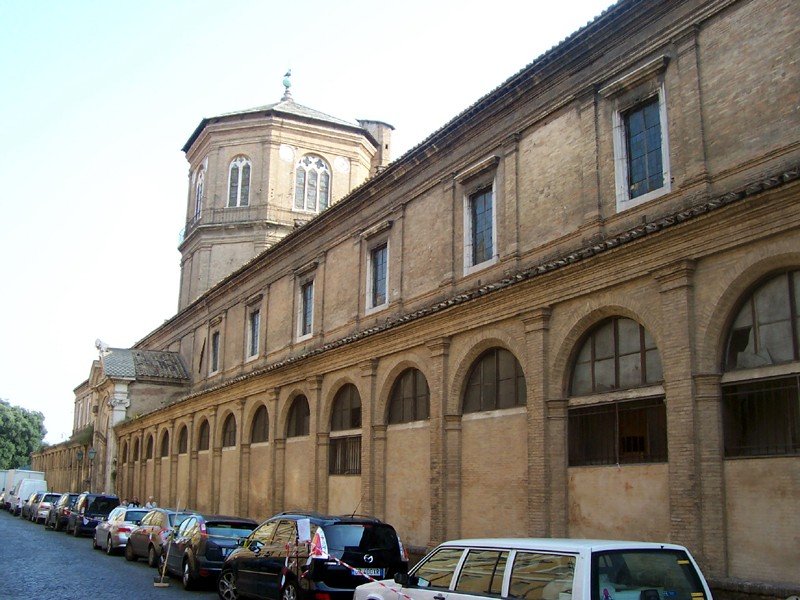
Ospedale di Santo Spirito in Sassia Rome: Visiting Hours, Tickets, and Comprehensive Guide
Date: 14/06/2025
Introduction
The Ospedale di Santo Spirito in Sassia is one of Rome’s most storied landmarks—a living testament to nearly thirteen centuries of medical innovation, social care, and architectural grandeur. Founded in 727 CE as a hospice for Saxon pilgrims, this extraordinary complex has evolved through medieval, Renaissance, and modern eras, always at the forefront of healthcare and charity. Today, it welcomes visitors as both a functioning hospital and a museum, showcasing remarkable art, architecture, and a unique legacy of compassion. This guide provides detailed information on history, visiting hours, tickets, accessibility, highlights, and practical tips to help you make the most of your visit.
Historical Overview
Foundations and Medieval Expansion
Established by King Ine of Wessex for Saxon pilgrims, the original hospice was situated in the “Schola Saxonum” district—an area dedicated to Anglo-Saxon visitors near St. Peter’s Basilica. After periods of destruction, the institution was magnificently rebuilt in 1198 by Pope Innocent III, who entrusted it to the Order of the Hospitallers of the Holy Spirit. This marked the beginning of its transformation into a pioneering hospital, offering shelter and medical care to Rome’s poor, sick, and abandoned children. The institution gained renown for its charitable innovations, including the “Ruota degli Esposti,” a revolving wheel for the anonymous reception of abandoned infants—a model later adopted across Europe (Turismo Roma; RomArtGuide).
Renaissance Flourishing
The Renaissance saw the hospital’s architectural and social significance soar. Under Pope Sixtus IV (1471–1484), architect Baccio Pontelli redesigned the complex, introducing the magnificent Corsia Sistina—an enormous, light-filled ward adorned with frescoes that narrate the hospital’s history and reflect Renaissance ideals of hygiene, natural light, and ventilation. The period also brought practical innovations: a pharmacy, botanical gardens for medicinal plants, and specialized wards for women and children (Museum of the Mind; Accademia Storia Sanitaria).
Modernization and Contemporary Role
The 18th and 19th centuries saw further expansion, including work by architect Ferdinando Fuga, who modernized the hospital with new wings and improved infrastructure. The hospital was among the first in Europe to implement record-keeping, early quarantine, and patient segregation—all innovations that shaped public health policy. Today, it operates within the ASL Roma 1 network, combining modern medical services with the preservation of its priceless cultural and historical heritage (ASL Roma 1).
Architectural and Artistic Highlights
The Corsia Sistina
The Corsia Sistina is the heart of the complex—a vast, 120-meter-long Renaissance ward with high coffered ceilings and abundant natural light. Its upper walls feature a fresco cycle depicting the hospital’s founding, charitable works, and scenes from daily life. These artworks are both a historical record and a celebration of Christian charity (Turismo Roma; Museum of the Mind).
Palazzo del Commendatore and Cloisters
The 16th-century Palazzo del Commendatore, designed by Giovanni Lippi, is adorned with frescoes by Jacopo and Francesco Zucchi that illustrate the hospital’s mission. The complex also boasts two peaceful cloisters—one for friars and one for nuns—offering tranquil respite amid the busy city (Accademia Storia Sanitaria).
Ancient Foundations and Archaeology
Built over the villa of Agrippina the Elder, the hospital preserves archaeological remains from ancient Rome, including opus reticulatum walls, mosaic floors, and marble fragments visible beneath the Corsia Sistina (Wikipedia).
The Ruota degli Esposti
A significant social innovation, the foundling wheel (“ruota degli esposti”) allowed mothers to safely and anonymously leave infants in the hospital’s care—a poignant reminder of the institution’s role in protecting the vulnerable (Museo Storico Ospedale Santo Spirito).
Biblioteca Lancisiana
Founded in 1711, this medical library is among Italy’s most important, housing rare manuscripts, incunabula, and early printed books—an invaluable resource for the history of medicine (Turismo Roma).
Museum of the History of Sanitary Art
Located in the Sala Alessandrina, this museum hosts hundreds of artifacts, including pharmaceutical ceramics, scientific instruments, frescoes, and paintings. Notable highlights are 17th-century globes by Vincenzo Coronelli and rare medical equipment (Turismo Roma).
Visiting Information
Location
- Address: Borgo Santo Spirito 1, Rome
- Nearby: Vatican City, St. Peter’s Basilica, Castel Sant’Angelo, Piazza Navona (Lonely Planet)
How to Get There
- Metro: Ottaviano (Line A), Cipro
- Bus: Lines 23, 62, 81
- On Foot: Short walk from Vatican City and Castel Sant’Angelo
Hours and Tickets
-
Complex and Museum:
- Monday to Friday: 9:00 AM–6:00 PM
- Saturday: 9:00 AM–2:00 PM
- Closed Sundays and public holidays
-
Museo Storico Ospedale Santo Spirito: Tuesday to Sunday, 10:00 AM–6:00 PM; closed Mondays
-
Biblioteca Lancisiana: Monday to Friday, 9:00 AM–1:00 PM (extended to 4:00 PM on Wednesdays and Thursdays)
-
General Admission: €8
-
Reduced Admission: €5 (EU citizens 18-25, seniors 65+)
-
Children under 18: Free
-
Guided Tours: Starting from €12; advance booking required
-
Special Exhibitions/Events: Check the official website for details
Always confirm visiting hours before your visit, as schedules may change for events or holidays (Turismo Roma).
Accessibility
- Mobility: The complex offers accessible routes and facilities; visitors with specific needs should contact staff in advance for the latest information.
- Photography: Allowed in most public areas, except where indicated.
- Guided Tours: Strongly recommended for a richer experience; available in Italian, with English upon request.
Visitor Tips
- Booking: Reserve tickets or tours ahead, especially for groups.
- Dress: Modest attire is recommended due to the religious and historic nature.
- Time: Allocate 1.5–2 hours for a thorough visit.
- Nearby: Combine your tour with Vatican Museums or Castel Sant’Angelo for a day of exploration.
- Events: Check for concerts, lectures, or temporary exhibitions, which often take place in the hospital’s historic halls.
Visual Highlights
Suggested images and alt tags for accessibility and SEO:
- “Ospedale di Santo Spirito in Sassia entrance”
- “Corsia Sistina frescoes”
- “Foundling wheel at Santo Spirito”
- “18th-century frescoes inside Santo Spirito museum”
Interactive maps and virtual tours are available on the official sites, helping you navigate the complex and plan your visit.
Frequently Asked Questions (FAQs)
Q: What are the opening hours?
A: Monday to Friday, 9:00 AM–6:00 PM; Saturday 9:00 AM–2:00 PM; closed Sundays and public holidays. Museum: Tuesday to Sunday, 10:00 AM–6:00 PM.
Q: How much is admission?
A: General admission is €8; reduced rates and free entry for children under 18.
Q: Is the hospital accessible for people with disabilities?
A: Yes, there are accessible routes; contact the site in advance for specific needs.
Q: Are guided tours available?
A: Yes, and they are highly recommended. Book in advance via the official website.
Q: Can I take photos?
A: Photography is generally allowed in public spaces, but check for restrictions in certain museum areas.
Conclusion
The Ospedale di Santo Spirito in Sassia is a remarkable journey through Rome’s history—where charity, medicine, art, and architecture converge. From its medieval foundations to its Renaissance splendor and continued role as a center of healing and learning, this complex offers an immersive experience for all visitors. Plan your visit by checking official sources for the latest details, and enhance your exploration with guided tours and nearby attractions. Don’t miss this unique opportunity to walk through centuries of compassion and innovation in the heart of Rome.
Sources and Further Reading
- ASL Roma 1 Official Website
- Turismo Roma
- RomArtGuide
- Museum of the Mind
- Wikipedia
- Turisti per Caso
- iris.uniroma1.it
- Museo Storico Ospedale Santo Spirito
- Lonely Planet
- Accademia Storia Sanitaria
For more travel tips, historical guides, and up-to-date information on Rome’s hidden gems, download the Audiala app and follow our social media channels.
